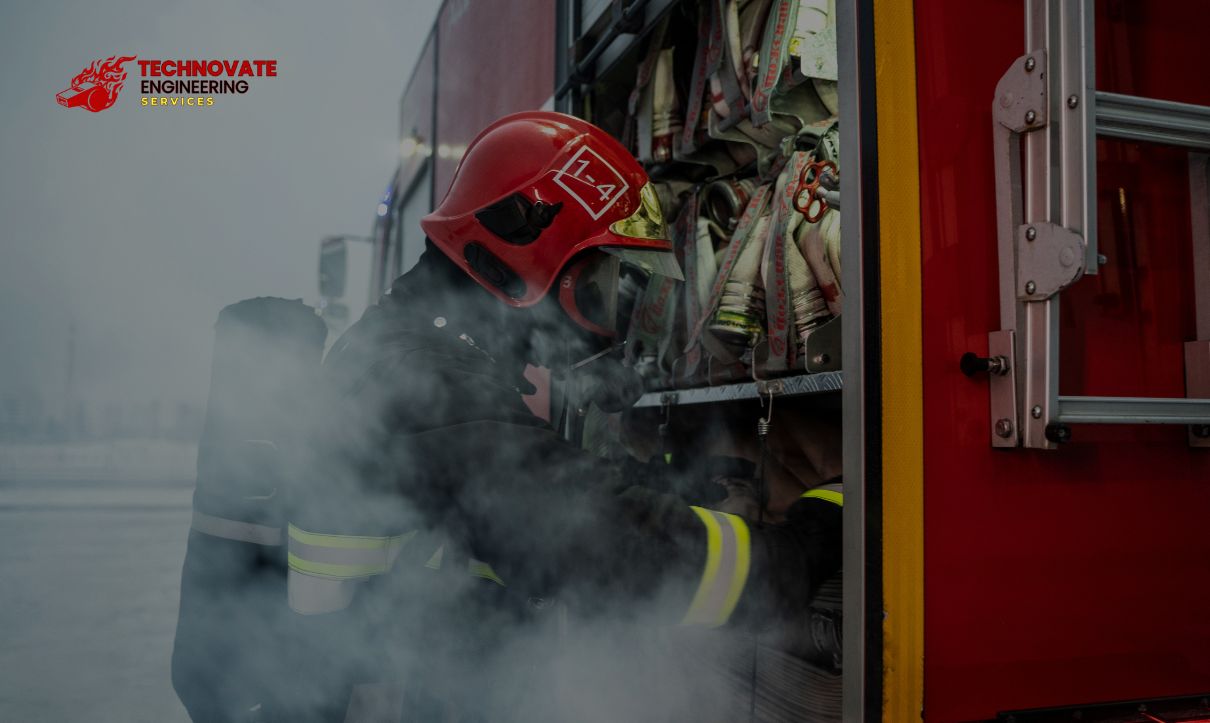In 2024, the landscape of fire safety is evolving at a rapid pace, driven by technological advancements, stricter regulatory standards, and the growing need for sustainability. The importance of robust fire safety engineering is paramount, not just for protecting property but also for ensuring the well-being of individuals and businesses. This blog delves into the major trends shaping fire safety engineering in 2024 and what organizations need to know to stay ahead of the curve.
” Fire is the test of gold; adversity, of strong men.””
Marcel A. H. Proust
1. Sustainability in Fire Safety Solutions
Sustainability has taken center stage in many industries, and fire safety is no exception. The demand for eco-friendly fire suppression systems is on the rise, with companies looking for solutions that are both effective and environmentally responsible. Traditional firefighting materials are being replaced with greener alternatives, which still offer the same level of protection but with less environmental impact.
Moreover, electric and hybrid fire trucks are becoming more common, reflecting the broader trend toward electrification across industries. However, the rise of electric vehicles introduces new risks, especially when it comes to lithium-ion battery fires, which present unique challenges for fire departments(The Big Red Guide). Organizations must stay informed about these changes to ensure they adopt the right fire safety measures for these emerging technologies.
2. Advances in Predictive Analytics and Fire Risk Management
Data-driven strategies are revolutionizing fire safety. Predictive analytics now allow businesses to anticipate potential fire hazards before they occur, offering a more proactive approach to fire risk management. By analyzing past incidents and current conditions, organizations can prioritize inspections, maintenance, and even emergency response plans, ensuring better protection and minimizing downtime.
For instance, tools like infrared thermography help detect potential fire hazards such as hotspots that would otherwise go unnoticed during routine inspections(TÜV SÜD). Coupling this with real-time data from smart building systems can significantly reduce fire risks, particularly in high-stakes industries such as manufacturing and energy.
3. Stricter Compliance and Regulation Updates
Fire safety regulations are continuously evolving to address modern risks. In 2023, the National Fire Protection Association (NFPA) introduced updates like NFPA 70B, mandating more frequent inspections of electrical equipment. Similarly, the NFPA 25 standard now sets stricter guidelines for maintaining water-based fire protection systems, such as sprinklers and foam systems(TÜV SÜD).
This heightened focus on compliance means that businesses must allocate more resources to ensure their fire safety systems meet current standards. Failure to adhere to these regulations could lead to heavy fines, property damage, or worse—loss of life. Organizations must work closely with risk managers and fire safety professionals to stay compliant and mitigate potential risks.
4. Technological Integration in Firefighting
Firefighting is becoming smarter with the integration of AI, machine learning, and connected devices. Smart firefighting systems are now capable of offering real-time insights during emergencies, enabling faster and more efficient responses. For example, sensors in modern buildings can alert firefighters to the exact location of a fire, providing critical information on smoke levels and temperature fluctuations(The Big Red Guide).
Additionally, drones are being deployed in fire emergencies, offering aerial views that help commanders strategize and deploy resources more effectively. These technologies not only enhance the efficiency of fire response teams but also significantly improve safety by reducing the need for personnel to enter dangerous environments.
5. Human Element Hazards and Training
Despite advances in technology, human error remains a significant factor in many fire incidents. Improved human element programs that guard against common errors—such as improper use of equipment, insufficient training, and neglect of safety protocols—are crucial for minimizing risks(
). Fire safety training for employees and regular fire drills are essential components of a robust fire safety plan.
Organizations are also investing in better protective gear for firefighters, ensuring that those on the front lines are adequately protected against new threats like electrical fires and the dangers posed by flammable materials.
6. Climate Change and Fire Safety
The impact of climate change on fire safety is undeniable. Wildfires are becoming more frequent and severe, often overwhelming firefighting resources. Prolonged dry seasons and rising temperatures are leading to an increased risk of both natural and man-made fires. Fire departments across the globe are adapting by increasing their focus on wildfire prevention and response strategies(The Big Red Guide).
Urban areas, too, are feeling the effects of climate change. Modern buildings are often constructed with lightweight, sustainable materials, which, while beneficial for energy efficiency, can make structures more vulnerable to fire. Fire safety engineers must account for these new variables when designing fire protection systems.
Conclusion
As fire safety continues to evolve in 2024, it’s clear that technology, sustainability, and regulation are driving the industry forward. For businesses, staying compliant with stricter standards, adopting predictive fire risk management tools, and integrating sustainable firefighting solutions will be critical. Additionally, addressing the human element and training staff will remain as important as ever.
The future of fire safety is not just about extinguishing flames—it’s about prevention, prediction, and proactive planning. Organizations that embrace these changes will be better equipped to protect their assets, people, and the environment in the years to come.




7 Comments